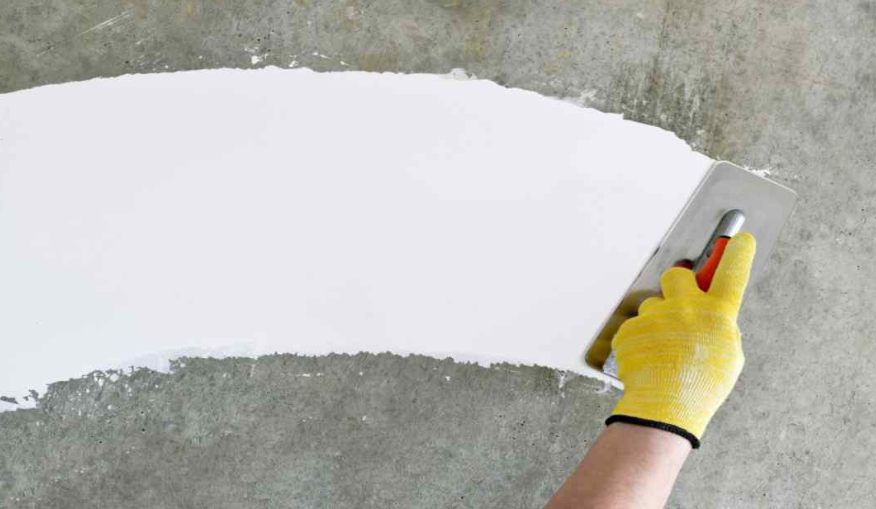Plaster for wall-scraping putty is mixed with building gypsum powder and talcum powder as the primary materials, supplemented by a small gypsum modifier. Add water and stir evenly when applying, and use the scraping method to level the wall surface. It is an ideal base material for spraying paint and pasting wallpaper. If selecting gypsum powder with a high fineness or mixed with inorganic pigments, it can be directly used as the decorative surface layer of the interior wall.

Usually, the surface decoration of concrete walls and roofs requires degreasing, chiseling, plastering of the bottom layer of sand, plastering of the surface layer, and scraping putty. It is time-consuming, labor-intensive, and easy occurs the hollow cracking phenomenon. The wall-scraping putty makes full use of the characteristics of quick setting, high bonding strength, and white and delicate construction gypsum and is formulated by adding various admixtures to improve the performance of the gypsum. In a broad sense, it is a thin-layer plastering surface Material. The wall-scraping putty has a compressive strength greater than 4.0MPa, a flexural strength greater than 2.0MPa, a bonding strength greater than 0.3MPa, and a softening coefficient of 0.3-0.4, so the hardened body will not collapse after absorbing water. The hardened body of the traditional white talcum powder depends entirely on the dry strength, and it will collapse immediately after being immersed in water. Some manufacturers of inferior putty were returned and fined by the construction party due to problems such as curling and falling after being applied to the wall. Similarly, some construction units that use inferior putty powder are complained about occasionally.
(1) Raw materials
According to the using requirements of plaster wall putty, the quality requirements for its raw materials are as follows:

1) Construction gypsum powder
Construction gypsum powder is the primary raw material of gypsum wall scraping putty and is the primary raw material to ensure bonding strength and impact strength, so the quality requirements are stricter.
2) Talc powder
Talc powder in gypsum putty mainly improves the workability of the slurry, is easy to scrape, and increases surface smoothness. The water-retaining agent expressly guarantees the scraping performance of the putty slurry. Ensure the workability of the putty slurry, and prevent the moisture in the putty layer from being absorbed by the wall too quickly, resulting
3) Water-retaining agent
The water-retaining agent is mainly based on cellulose derivatives, such as methylcellulose (MC), hydroxyethyl cellulose (HEC), hydroxypropyl methylcellulose (HPMC), and carboxymethyl cellulose (CMC)
4) Adhesive
Although CMC has a specific viscosity in the ingredients of wall-scraping putty, it will damage the strength of gypsum to varying degrees, especially the surface strength. Therefore, it is necessary to mix a small amount of adhesive to make it migrate to the surface during the process to increase the application and putty’s surface strength. Otherwise, the wall-scraping putty will appear as powder falling off the surface due to the long-term non-spray paint. However, MCJIPMC or 1IEC can be used without adhesives. Therefore, they are different from CMC in that they can be used as powdered adhesives, and they will not reduce the strength of gypsum or reduce very little.
5) Retarder
Although some cellulose bases and adhesives have a retarding effect on gypsum, the retarding product cannot reach the requirements of the use of gypsum wall scraping putty, so it must add a certain retarder.
6) Penetrating agent
Adding a tiny penetrating agent can make the wall-scraping putty combine better with the substrate. Commonly used agents are anionic and nonionic.
7) Plasticizing agent
The gypsum-hardened body itself is soft and brittle. Once the wall-scraping putty layer is too thick, peeling off the two layers is easy. Therefore, adding a certain amount of plasticizing agent and penetrating agent can improve the flexibility of the putty and further enhance the operability of the putty slurry. Commonly used plasticizing agents include various sulfonates and wood fibers.



